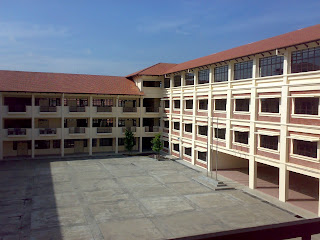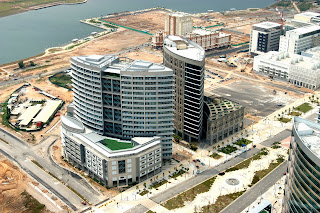




In April 2007, Putrajaya Holdings Sdn Bhd invited 10 Malaysian architectural firms to participate in a design competition for Parcel F, Putrajaya. The proposed development comprised 10 government office buildings and its supporting facilities.
Located adjacent to Parcel E (offices for The Ministry of Education, Malaysia among others), the development site is accessible from the Putrajaya Oval Road, situated facing the junction leading to Alamanda Shopping Centre and Precinct 16. The competition brief called for architectural designs that interpret Islamic Architecture in a modern form.
Our proposal featured 2 main concepts; first, a series of repetitive monumental structures reminiscent of entrance gateways or ‘Iwans’, a predominant feature in Islamic architecture in the middle east used as entrance lobbies for public buildings; and second, facades of glazed windows layered with aluminum sun shading architectural screens of various patterns inspired by the concept of ‘Masharabia’ windows of Morocco. These facades contrasted against the white painted walls of corner pylons, structural elements that provide for both aesthetic and practical functions for the scheme. The pylons, positioned at the corners of each ‘Iwan’ and office building, contribute to the predominantly vertical overall outlook while making it possible to have column free interior spaces.
Eventually, 3 architectural firms obtained the commission for Parcel F; Pakatan Reka Architects Sdn Bhd (PRA) appointed as the lead consultant, S&O Architects Sdn Bhd and Jafri Merican Architect.


















